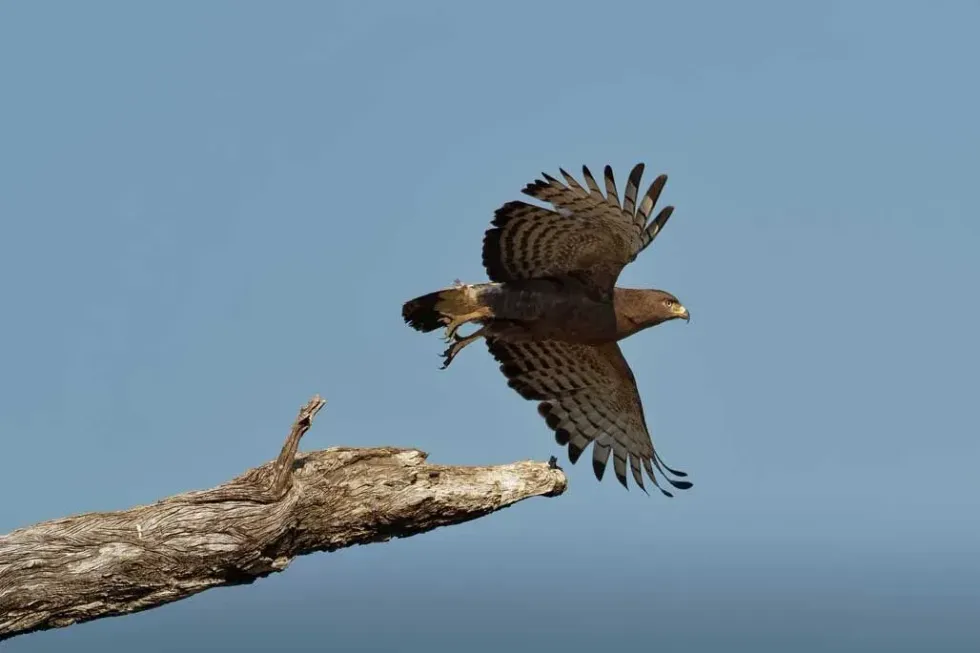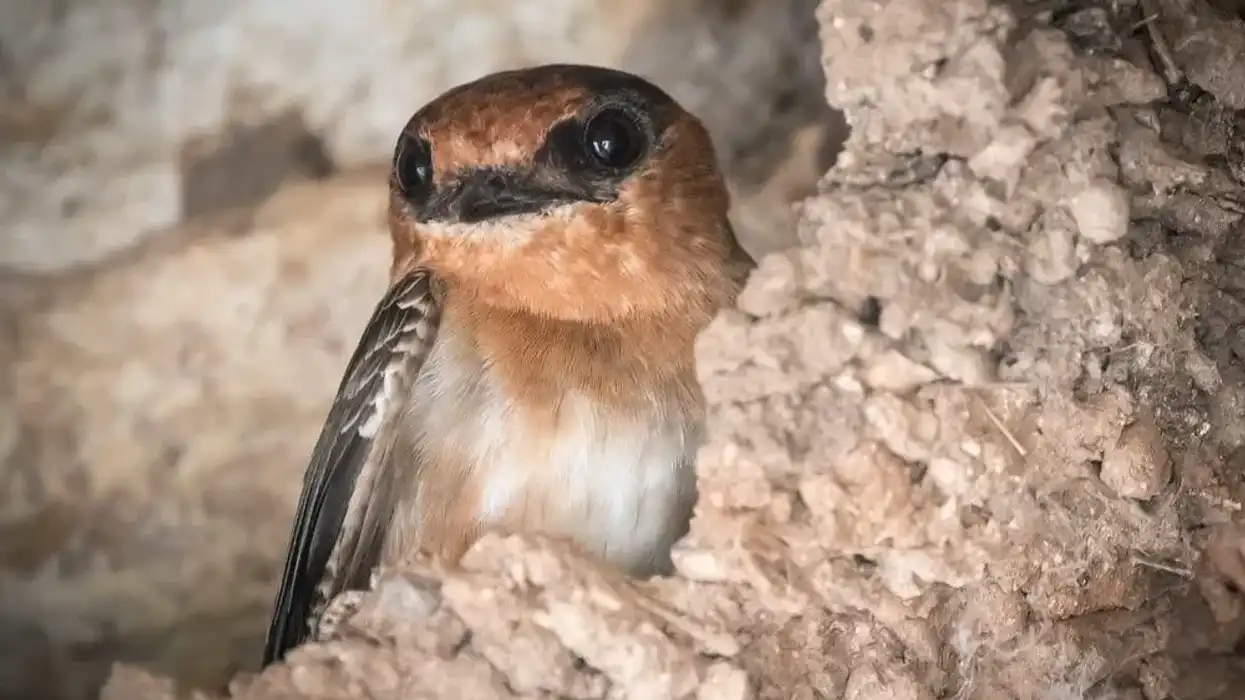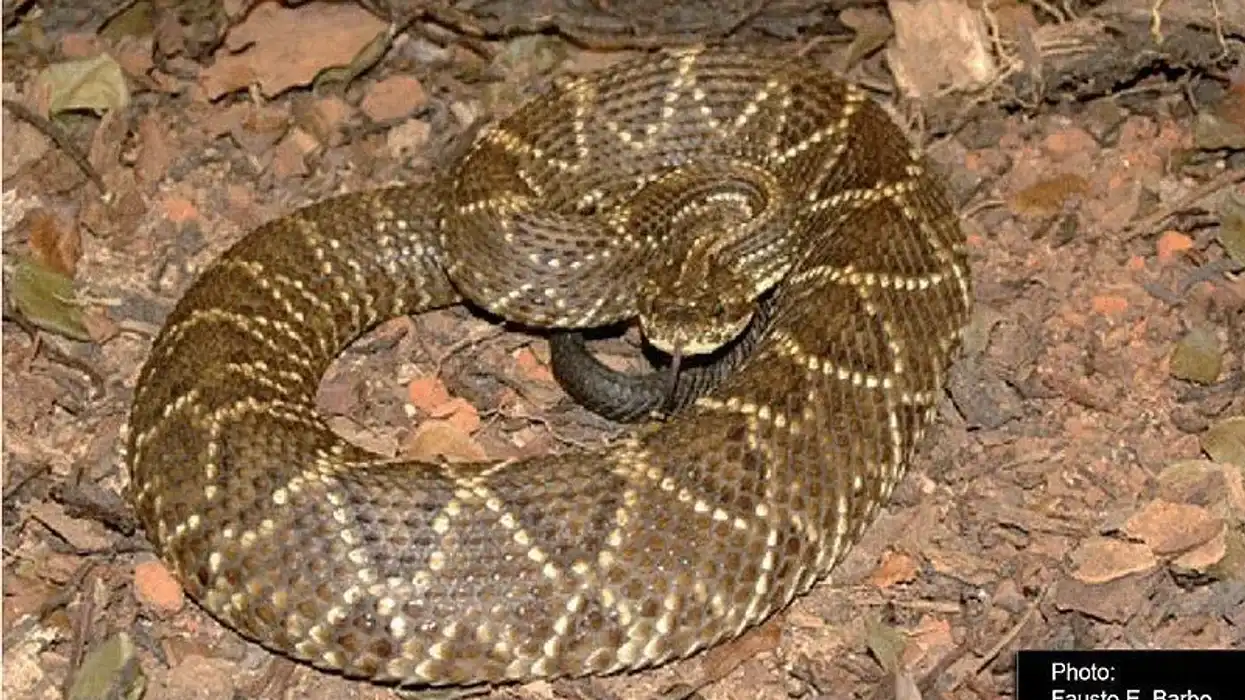The Circaetus or snake eagle is the genus of medium-sized raptors or birds of prey that majorly prey on snakes, lizards, and occasionally on birds and small mammals.
The genus consists of seven species which are the short-toed eagle, black-chested snake eagle, Beaudouin's snake eagle, brown snake eagle, south banded snake eagle, western banded snake eagle, and Congo serpent eagle.
Snake eagles are primarily found in several countries of Africa, the Middle East, Russia, India, and Indonesia. They inhabit open habitats such as cultivated plains, savannas, semi-desert areas, and foothills.
The rounded head and broad wings help to differentiate the snake eagle. The average weight and length of these eagles are 2.6-5.5 lb (1.2-2.5 kg) and 23-31 in (59-78 cm).
Species such as the short-toed snake eagle (Circaetus gallicus) have been listed as Least Concern, while the Beaudouin's snake eagle (Circaetus baudouin) is classified as Vulnerable in the International Union for Conservation of Nature Red List. This bird is majorly threatened by loss of habitat and human encroachment.
Continue reading for more interesting facts about the snake eagle and if you found this article insightful, don't forget to check out exciting information about different animals like the harpy eagle and the golden eagle.
Sanke Eagle Interesting Facts
What type of animal is a snake eagle?
Snake eagles or Circaetus is a genus of medium-sized raptors and their diet includes reptiles, especially snakes.
What class of animal does a snake eagle belong to?
Snakes eagles belong to the class of Aves, the family Accipitridae, and the Circaetus genus.
How many snake eagles are there in the world?
The exact population of snake eagles is not known as of now, but these eagles are found in Africa, the Middle East, and several countries of Asia. It is said that the largest population of short-toed eagles and snake eagles (Circaetus gallicus) are found in Russia, Spain, and France.
Where does a snake eagle live?
Snake eagles are primarily found in several countries in Africa, the Middle East, Russia, India, and Indonesia.
What is a snake eagle's habitat?
Snake eagles inhabit open habitats such as cultivated plains, savannas, semi-desert areas, and foothills. Species like the short-toed eagle snake eagle (Circaetus gallicus) dwells in trees of open cultivated plains, foothills, semi-desert areas, and arid stony deciduous scrub areas.
The nest is constructed in sites with large trees or cliffs. While the black-chested snake eagle (Circaetus pectoralis) inhabits thornbush savannas, woodlands, and grasslands.
Who do snake eagles live with?
Snake eagles are solitary and prefer to live alone but pairs are often found in the breeding season.
How long does a snake eagle live?
The short-toed snake eagle generally lives up to 17 years, but their maximum age in the wild is 30 years.
How do they reproduce?
Snake eagles are monogamous which means one pair stays together for life. Their breeding season varies according to the range. Adults generally reach sexual maturity after three to four years of age. They even perform several courtship displays such as circling, dives, and other sky dances to attract each other.
The brown snake eagle builds a wide and deep nest that is placed 39 ft (12 m) above the ground. The incubation period lasts for around 45-50 days and females generally lay only one egg.
Also, snake eagles are known for laying eggs in the nest of other species such as the tawny eagle and Wahlberg's eagle. Juveniles live with their parents until they attain independence.
What is their conservation status?
Species such as the short-toed snake eagle (Circaetus gallicus) have been listed as Least Concern, while the Beaudouin's snake eagle (Circaetus baudouin) is classified as Vulnerable in the International Union for Conservation of Nature Red List. Loss of habitat and hunting are a few major threats to snake eagles.
Snake Eagle Fun Facts
What do snake eagles look like?
The short-toed snake eagle, a species of snake eagle, has a white underside, while the upper parts are grayish brown. The yellow eyes, rounded head, and pale bands under the wings make the bird look like an owl. The tail also has three to four bars.
How cute are they?
By looking at snake eagles, one would easily get intimidated. Also, their feathers are very impressive.
How do they communicate?
These birds use similar methods as other eagles while communicating with each other. They possess several calls such as chirping and whistling. Also, they perform numerous courtship displays during the breeding season to attract each other. Some species such as the short-toed snake eagle becomes a bit noisy during the breeding season.
How big is a snake eagle?
The average weight and length of these birds are 2.6-5.5 lb (1.2-2.5 kg) and 23-31 in (59-78 cm). These birds are bigger than the Cooper's hawk and the common nighthawk.
How fast can a snake eagle fly?
The exact speed of these birds is not known but they are known for their exceptional hunting abilities. They dive from a perch and catch snakes from the ground. Short-toed eagles generally hunt from a flight around 98 ft (30 m) above the ground. The flight could even reach a height of 1476 ft (450 m).
How much does a snake eagle weigh?
These birds weigh around 2.6-5.5 lb (1.2-2.5 kg).
What are the male and female names of the species?
There are no specific names given to the male and female birds.
What would you call a baby snake eagle?
The baby of a snake eagle is called an eaglet.
What do they eat?
These birds are carnivores and their diet mainly includes snakes, lizards, small mammals like mice, and they rarely prey on birds and large insects such as ground beetles.
Are they dangerous?
Yes, snake eagles are very dangerous as they could even hunt small mammals. The sharp bill and claws of the bird could cause severe injuries to humans.
Would they make a good pet?
In several countries of Africa, the population of this bird has been declining and humans are not allowed to keep it as a pet. Also, snake eagles are not considered easy to tame like other birds.
Did you know...
Peregrine falcons can dive at a speed of 150 mph (241 kph).
A highly venomous snake can kill an eagle.
What are the types of snake eagles?
The genus Circaetus consists of seven species. There are the short-toed eagle, black-chested snake eagle, Beaudouin's snake eagle, brown snake eagle, south banded snake eagle, western banded snake eagle, and Congo serpent eagle. Their range and habitats vary but their diet mainly includes reptiles, especially snakes.
How does an eagle kill a snake?
To begin with, the bird follows the snake from its nest and then dives and catches its prey from the ground. In addition, the bird swallows the head first, using its sharp bill to kill the snake easily.
Also, the snake eagle hovers for long periods before going down and capturing its prey. To minimize the danger, the bird attacks the head first as the snake eagle is not immune to the snake venom or bite.
Here at Kidadl, we have carefully created lots of interesting family-friendly animal facts for everyone to discover! Learn more about some other birds from our sea eagle facts and martial eagle facts for kids pages.
You can even occupy yourself at home by coloring in one of our free printable snake eagle coloring pages.










